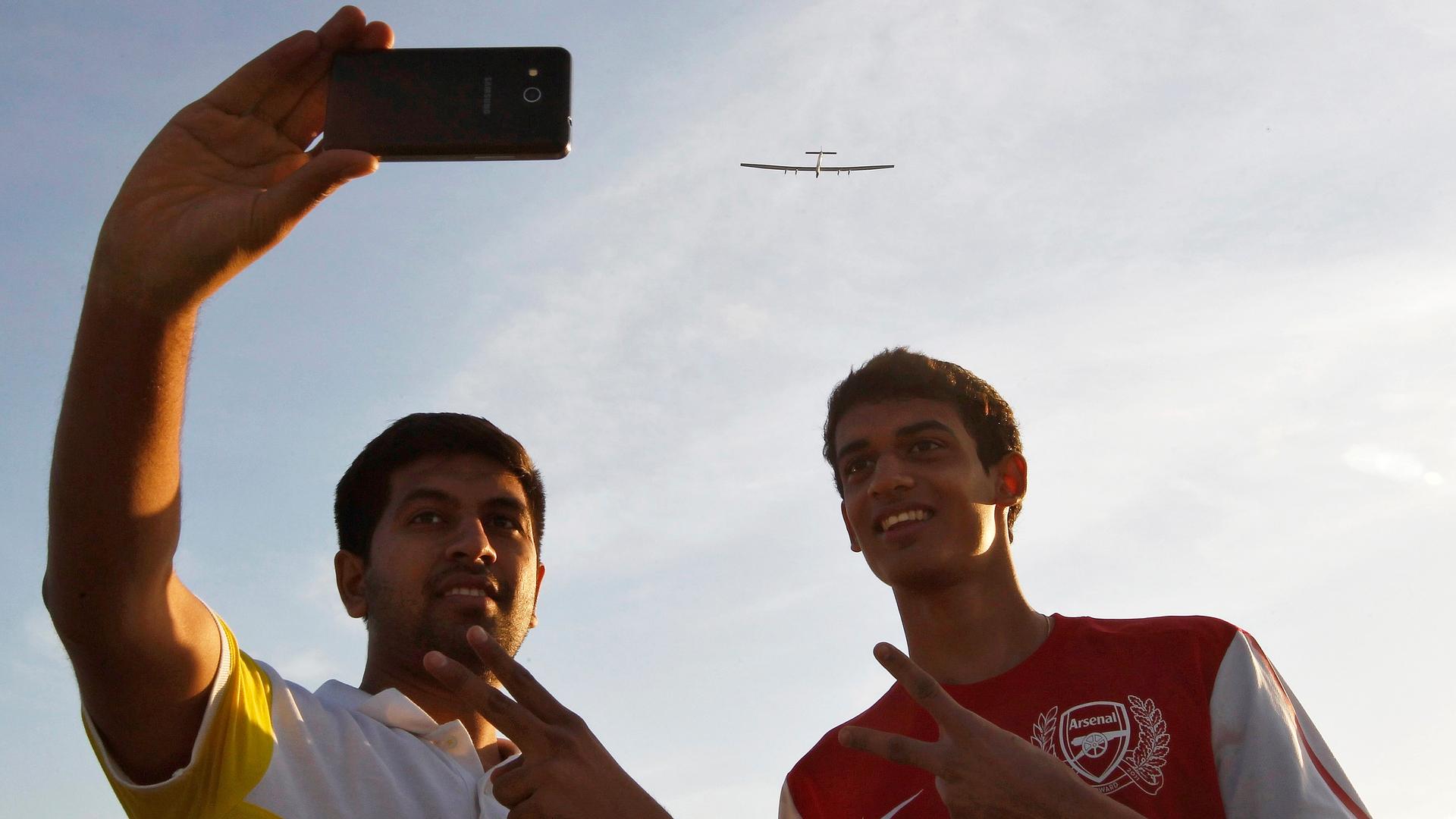India’s a young country — and the youth want to change the world
Two youths take a picture of themselves as the Solar Impulse 2, a solar powered plane, ascends in the sky behind them after taking off at the airport in the western Indian city of Ahmedabad March 18, 2015.
“You want to see the future … the future is India” says Somini Sengupta, an author and New York Times reporter.
Her new book "The End of Karma: Hope and Fury Among India’s Young" looks at how young people are shaping the world's largest democracy, where 40 percent of the population is under age 35 and a million people turn 18 every month. As this population grows up, it will significantly reshape India and the world politically, economically and environmentally.
“This is a generation that was born with one destiny and is trying to make another,” says Sengupta. “They're trying to overcome their past in many ways and in so doing they are really reshaping their country from inside and they're really reshaping Indian democracy.”
For Sengupta, Indian democracy is a “cousin” of US democracy. “They're both dynamic, very diverse democracies,” she says. “They're not based on one language or ethnicity. Both of the countries' origins go back to treating people quite unequally. For India, it's the caste system; for the United States it’s slavery and both countries, I think, are still contending with that and are still trying to be a more perfect democracy. So, in a way, you know what you see in both countries is an effort to realize their own dreams deferred.”
In order to understand how young people are shaping India and its democracy, Sengupta profiled several different people, including a 14-year-old girl named Varsha. Varsha is the daughter of a press wala (a merchant who presses clothes for a living), but she wants to become a police officer.
“When she was growing up, the big talk all over the country was about violence against women and so she wanted to do her part, she wanted to help keep women and girls safe,” says Sengupta.
“School was to be her exit ticket,” says Sengupta, but Varsha’s biggest challenge was persuading her father. “And this was not so easy because her father, while he was really her defender, her real champion, he was also the defender of the kinds of rules that kept girls like Varsha from realizing truly their potential.”
Her father wanted her to get some education, but ultimately marry into a good family. This story was a familiar one says Sengupta, “like the stories of so many young Indian women who I met, who were just pushing pushing, pushing their elders all along the way.”
This push for change will resonate throughout the world as this massive concentration of young working-age people grows up.“They are going to be migrating in larger and larger numbers. They're going to have an effect on the planet's ability to save itself, because India is going to have to grow its economy.”
And it will have to do all of this at a time when every country has to keep carbon emissions down. “So I think India's near future is going to have a real bearing on all of us.”
This story was first published as an interview on To the Point with Warren Olney.
Every day, reporters and producers at The World are hard at work bringing you human-centered news from across the globe. But we can’t do it without you. We need your support to ensure we can continue this work for another year.
Make a gift today, and you’ll help us unlock a matching gift of $67,000!
